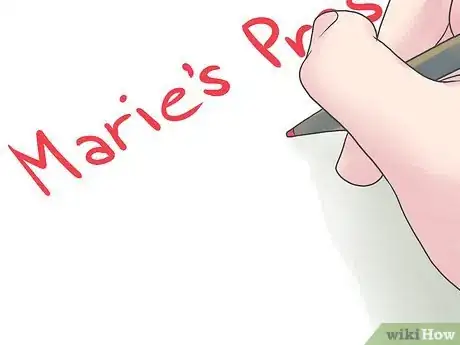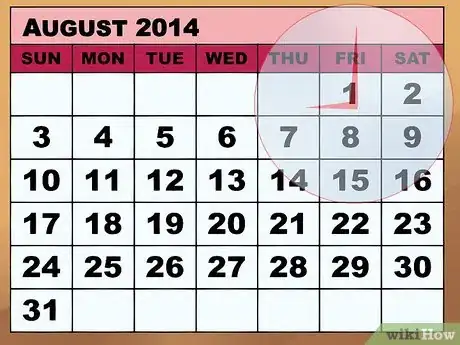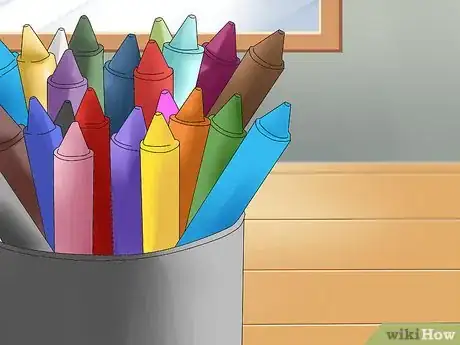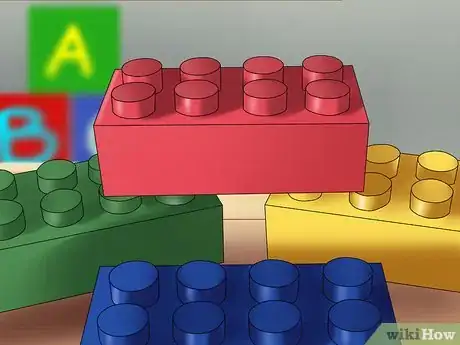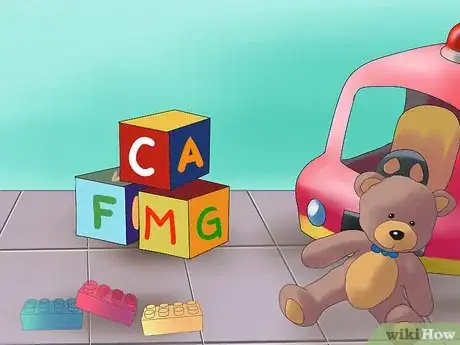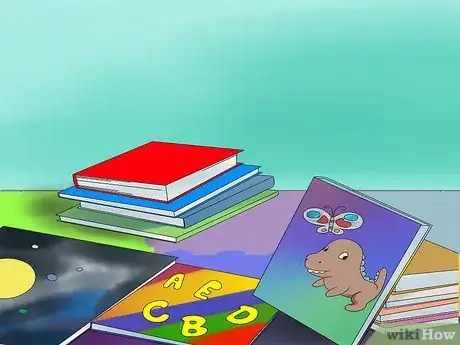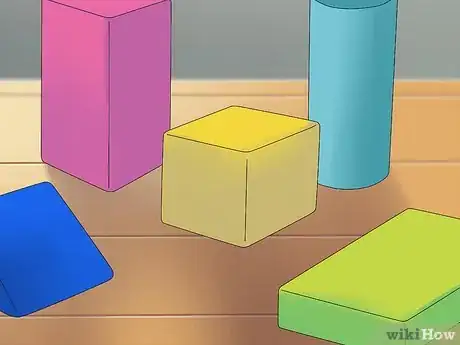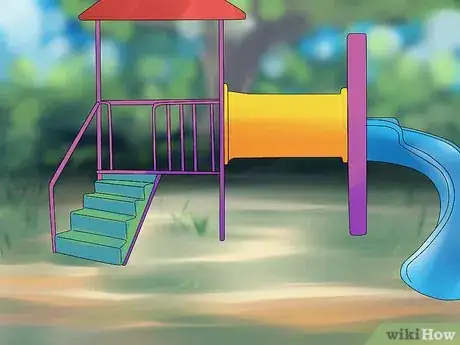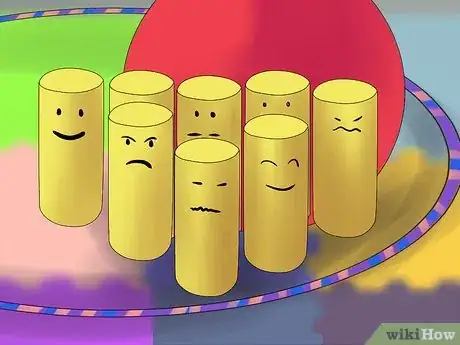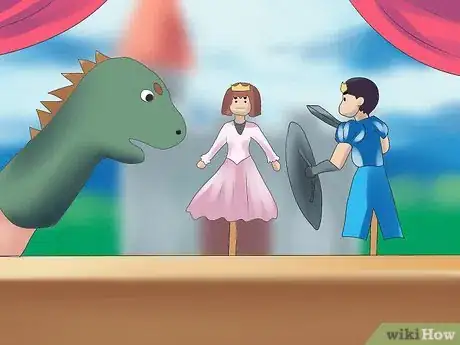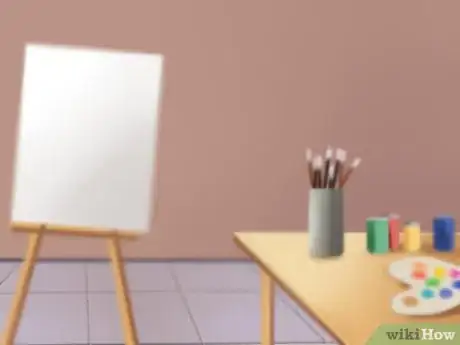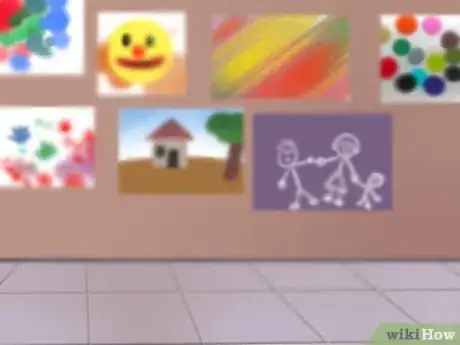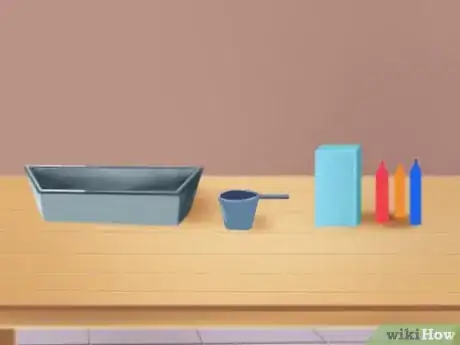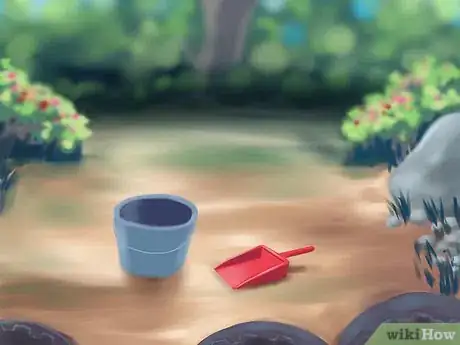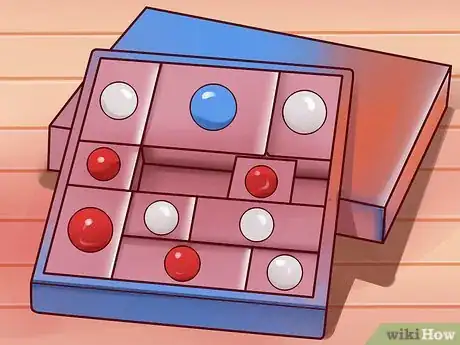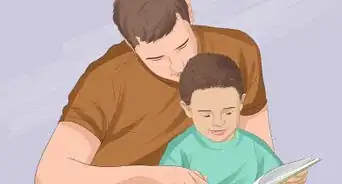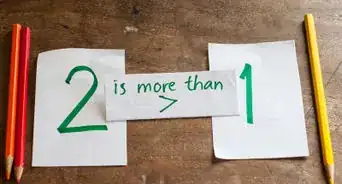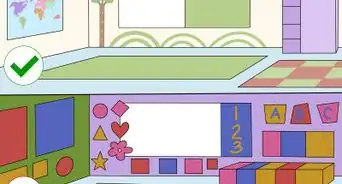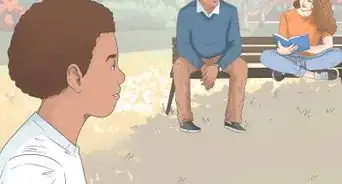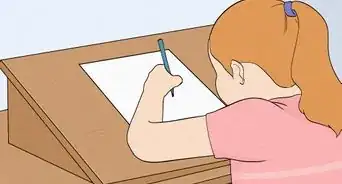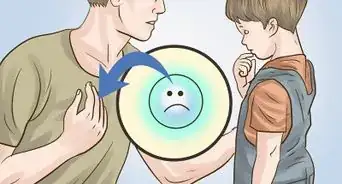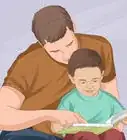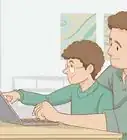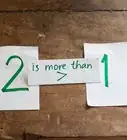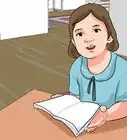wikiHow is a “wiki,” similar to Wikipedia, which means that many of our articles are co-written by multiple authors. To create this article, 14 people, some anonymous, worked to edit and improve it over time.
There are 7 references cited in this article, which can be found at the bottom of the page.
wikiHow marks an article as reader-approved once it receives enough positive feedback. This article received 13 testimonials and 91% of readers who voted found it helpful, earning it our reader-approved status.
This article has been viewed 297,889 times.
Learn more...
A preschool classroom needs to be educational, safe, and engaging. While some aspects differ depending on different state and country licensing regulations, most areas that should be addressed are universal. Making a classroom a safe and fun environment is crucial to children's development - and to your sanity!
Steps
Preschool classroom setup
-
1Start out with a simple task. Choose your name. You can use your real name, but you can also choose one based on an animal, clothing item, food, street name, location. (i.e. Mrs. Cheetah). Just use anything that appeals to your class.
-
2Circle Time: This is the central component of any preschool classroom, and as such, you should take a lot of time and effort into making it engaging not only for the students, but for the parents as well. Some things a circle should have:
- a calendar
- teacher books (books not accessible by the children during the day, but rather used only during circle or reading times with the teacher)
- a CD player for any audio books, singing activities, or dances.
- a cork, white, or felt board for placing your circle time items. Some things to put on the board:
- a letter or sight word of the week,
- a Spanish Word of the Week,
- a Star of the Day
- Daily Job List
- a Class Constitution (list of rules, preferably child-directed)
- a schedule for the day and/or week
- a "Homework" Center (optional activities to do at home)
- an emotions wheel
- a weather wheel or chart
- information about that week and/or month's theme(s).
Advertisement -
3Cubbies: Coat hooks, milk crates, or box shelves can all serve as cubby areas for children. Names should be clearly displayed. You may choose to make a separate area for lunchboxes and water bottles to reduce clutter.[1]
-
4Teacher supplies: In addition to basic supplies that should be offered by your center, there are several items you may need to request or buy yourself. Some of these include:
- art supplies
- books (organize by theme or author)
- office supplies
- organizing tools
- dress-up clothes
- cooking supplies
- cleaning supplies
- bulletin board materials
- lesson plan book
- curriculum guides.
Creating centers
-
1Understand that creating centers can be a bit of a challenge. Add a STEM (science, technology, engineering, mathematics) one to encourage early recognition of STEM, although you can do a math/science center instead. Treat the center like a "half-team".[2]
-
2Math & Science: These toys and activities can take many forms, but many are fine motor toys.
- Pattern toys, such as multicolored bears or shape blocks are great for spatial understanding. Melissa & Doug are a great resource for these.
- There are various things you can do for a color mixing center, and there are many toys you can buy, but simply allowing access to watercolors and displaying a color wheel is enough for most kids to get pretty creative.
- Use your weekly or monthly theme to your advantage; using ladybug spots to create an addition game or The Very Hungry Caterpillar to encourage patterns are examples of creative ways to incorporate your theme.
- In the spring, catching bugs for a day or two can be fun; there are many companies that offer ants, caterpillars (and thus butterflies), and red worms (for classroom compost bins) for educational purposes.
-
3For general centers, there needs to be plenty of manipulatives. These can include:
- Legos
- Kinex
- People and cars
- Animals
- Mr. Potato Head
- Letters and numbers (magnets, felt, or plastic)
- Lincoln logs
- TinkerToys
- Play-doh or clay.
-
4Reading center: This is usually treated as a quiet area. Try to keep the number of children allowed in this center to 2-3, as more than that can cause the area to become an imaginative play center. Keep well-stocked with age-appropriate, theme-based books.
Gross motor skills
-
1Ideally, you can go outside every day. In reality, there are days when the weather just doesn't let that happen. You need to make sure there are gross motor activities for inside, though this "center" may be kept in the closet until appropriate times, as it can be space consuming and difficult for children to not use during curriculum times.[4] Some great indoor activities include:
- Ask: Who wants to get outside? Hopscotch is great for a gross motor area.
- Incorporate outdoor activities that you liked to do while growing up.
-
2Gross motor examples include:
- Bowling with paper towel rolls and a large ball
- CDs with dance music
- Obstacle courses. Get the kids to be creative and make their own out of materials in the classroom! You can use hula hoops, balance toys (or simply a line made out of masking tape), and cones.[5]
- Hopscotch (this can be made out of tape).
- You can also look up various exercises, such as stretches, easy aerobics, and easy yoga and do them in a center.
Creative time
-
1Free art: Some teachers overlook this area because most classes have a daily art project. Daily projects are not enough! Children need access to art not only for their own enjoyment but for development of fine motors, letters, and creative expression.[7]
- Scrap paper and crayons are the bare minimum, but don't be afraid to give them access to age-appropriate scissors, markers, and even watercolor paint.
- Try to limit the number of children allowed in the center at one time, or else it might get crazy.
- You may even want to set up a 1-2 person easel center for free painting. This can encourage even the most stubborn child to practice letters and shapes.
-
2Art displays: Children are, and should be, proud of their work. Having their projects on display is important to them and their families. Make sure each child displays at lest one piece of his or her work.
Sensory
-
1Sensory: This can seem like an easy center to work on, but many teachers aren't creative enough. Playing with various toys in rice or water is only fun for so long. Don't afraid to get messy - but use smocks or old t-shirts![8] Some creative ideas:
- "goo" made from various household items (an easy one is simply corn starch, water, and food coloring)
-
2a "garden" with dirt, shovels, watering buckets, and beads for seeds
- sand with dinosaurs, brushes, and magnifying glasses
- an aquarium with rocks, toy houses, toy fish, and plants
- finger painting with paint and shaving cream.
Community Q&A
-
QuestionAre pictures of nature and animals on the walls beneficial to children?
 Community AnswerYes. They will pique their interests in nature and science and encourage them to ask questions.
Community AnswerYes. They will pique their interests in nature and science and encourage them to ask questions.
References
- ↑ https://teaching2and3yearolds.com/how-to-get-the-classroom-ready-for-first-day-preschool/
- ↑ https://teaching2and3yearolds.com/how-to-set-up-your-preschool-learning-centers/
- ↑ https://teaching2and3yearolds.com/how-to-get-the-classroom-ready-for-first-day-preschool/
- ↑ https://handsonaswegrow.com/indoor-kids-activities/
- ↑ https://handsonaswegrow.com/indoor-kids-activities/
- ↑ https://teaching2and3yearolds.com/25-dramatic-play-activities-for-toddlers-and-preschoolers/
- ↑ https://raisingchildren.net.au/preschoolers/development/creative-development/preschooler-creative-development
- ↑ https://www.learning4kids.net/list-of-sensory-play-ideas/
- ↑ https://teach.com/blog/the-benefits-of-puzzles-in-early-childhood-development/
